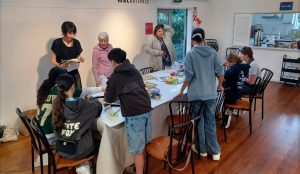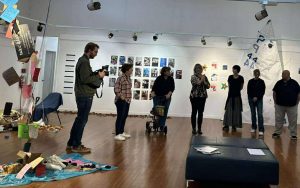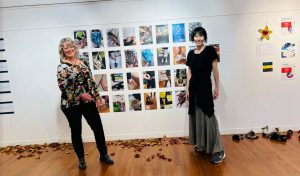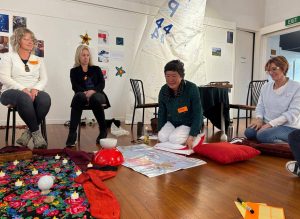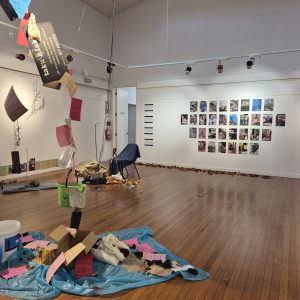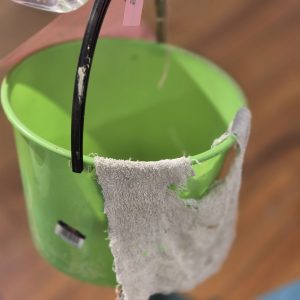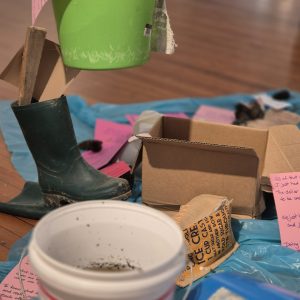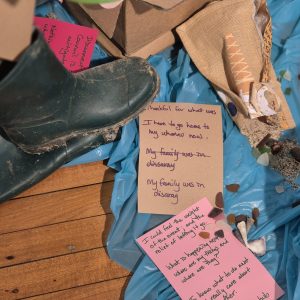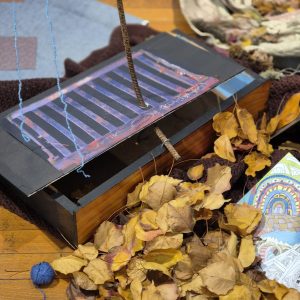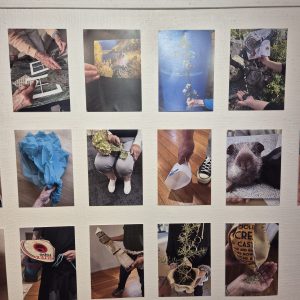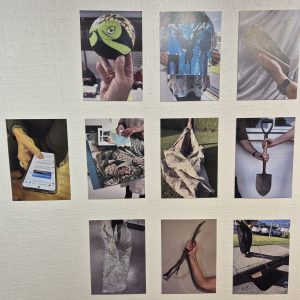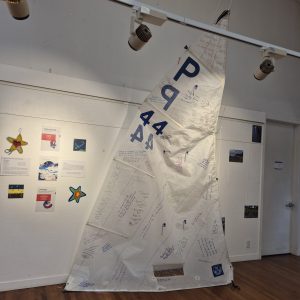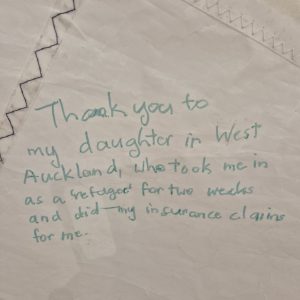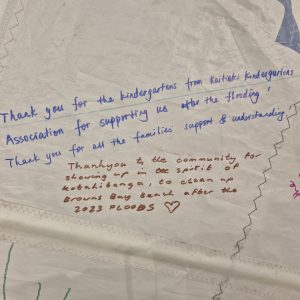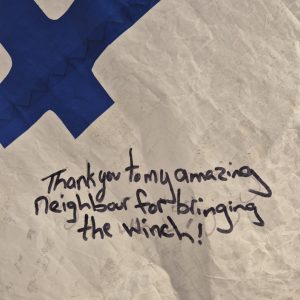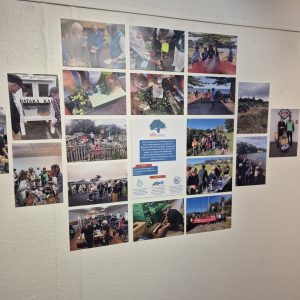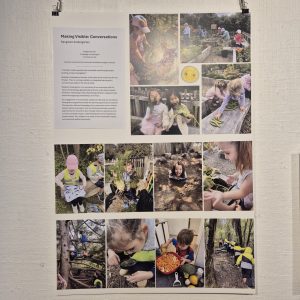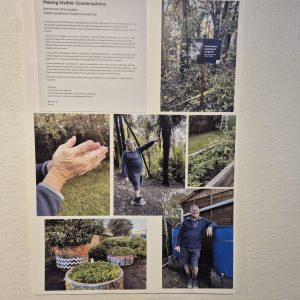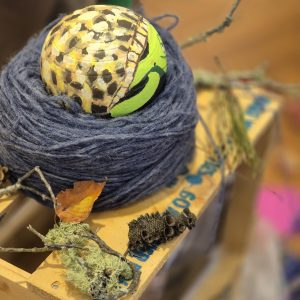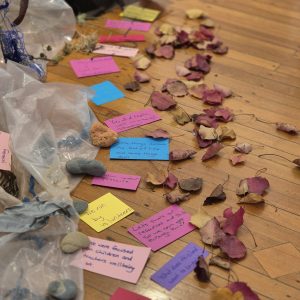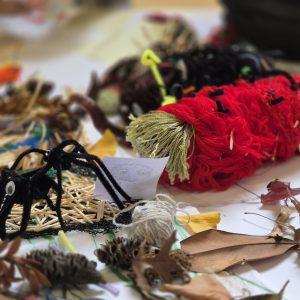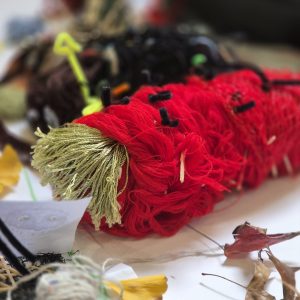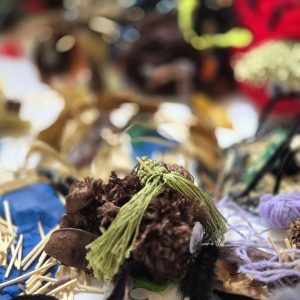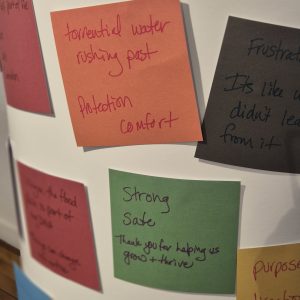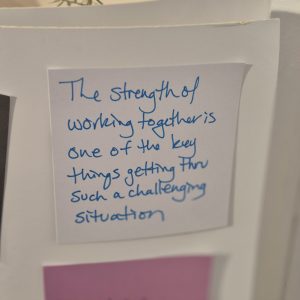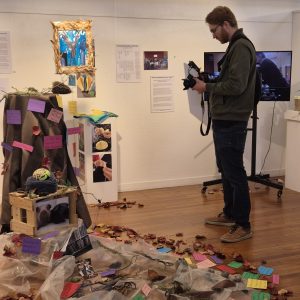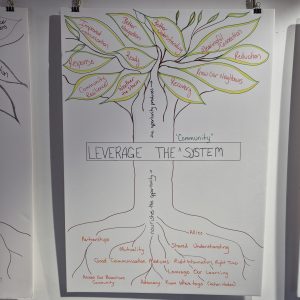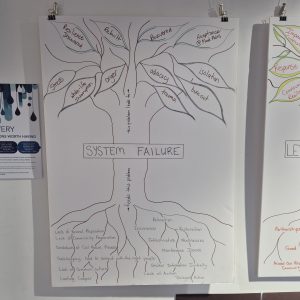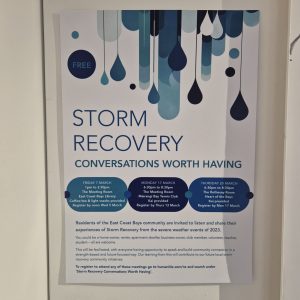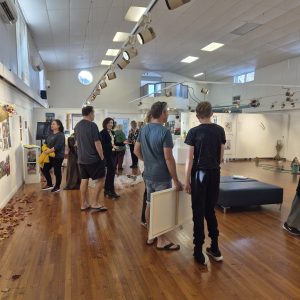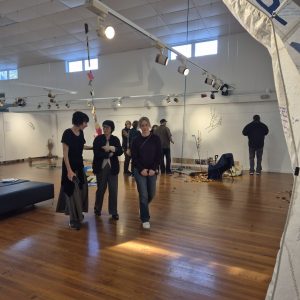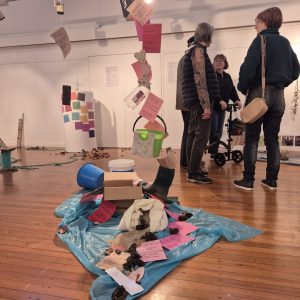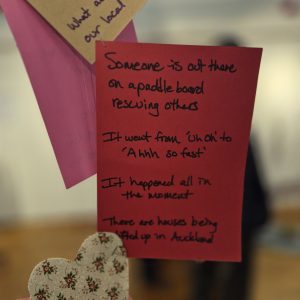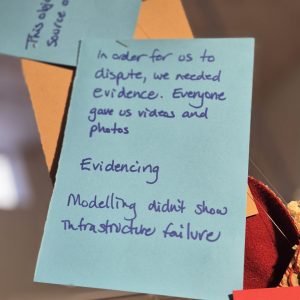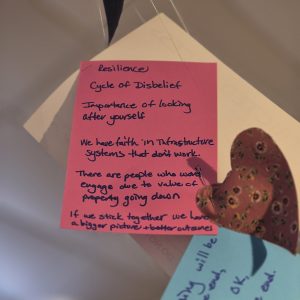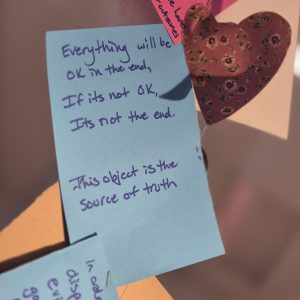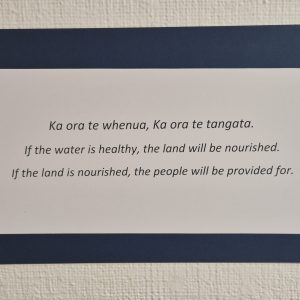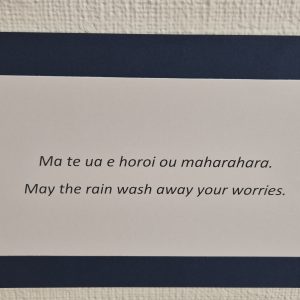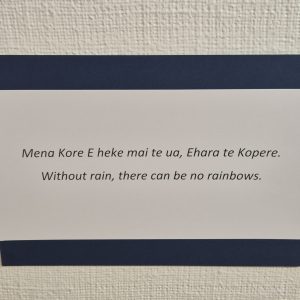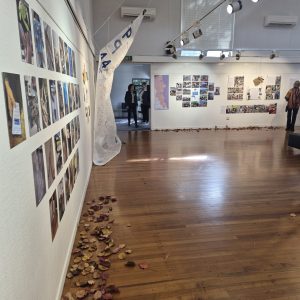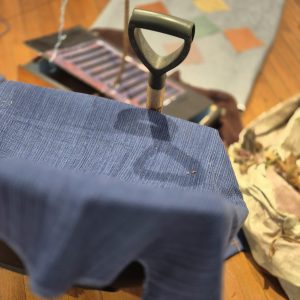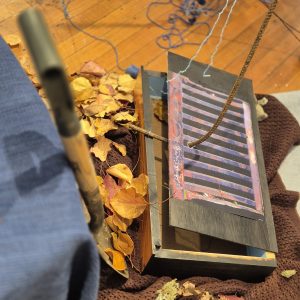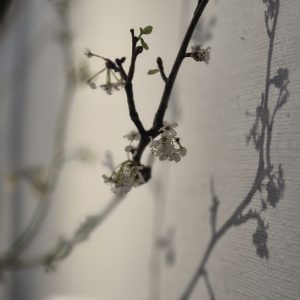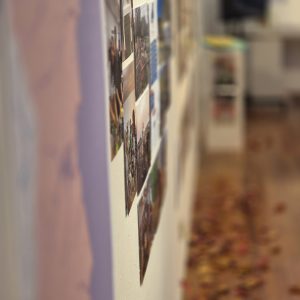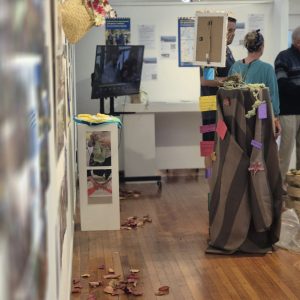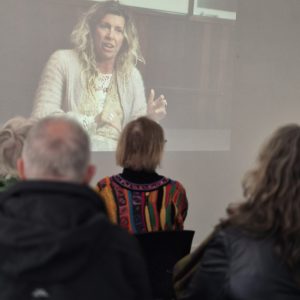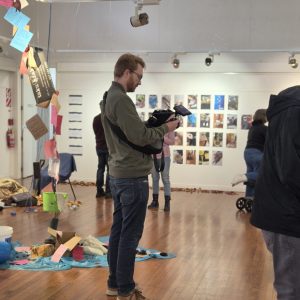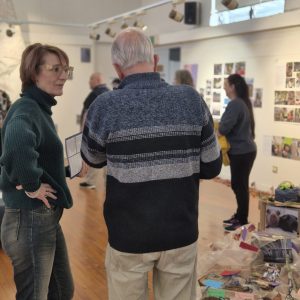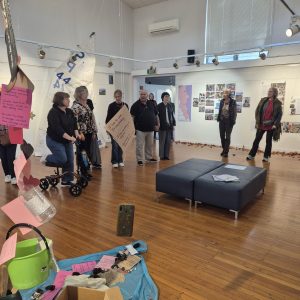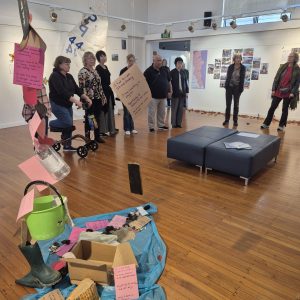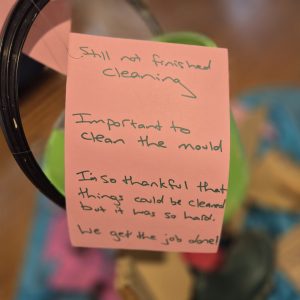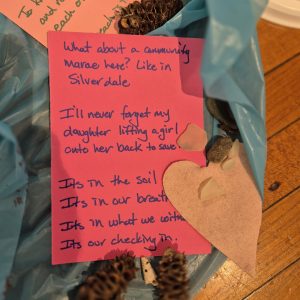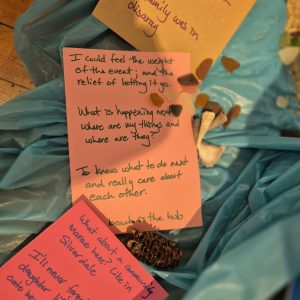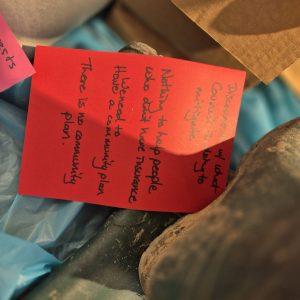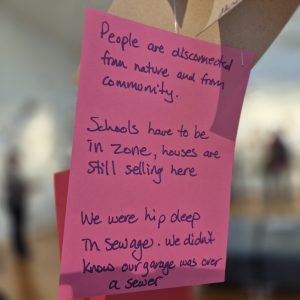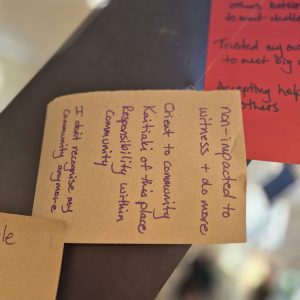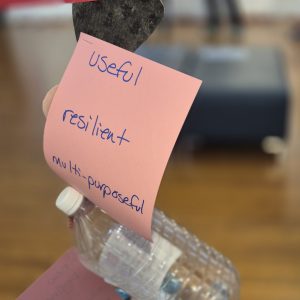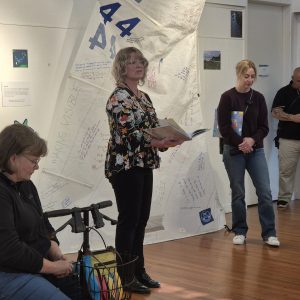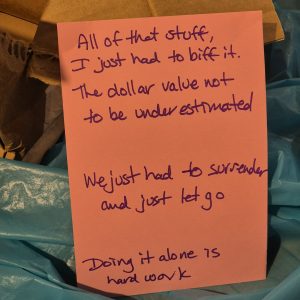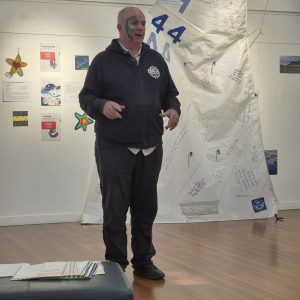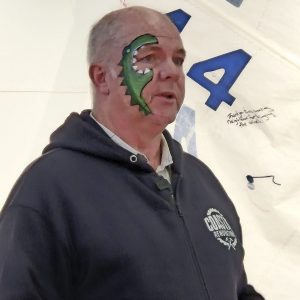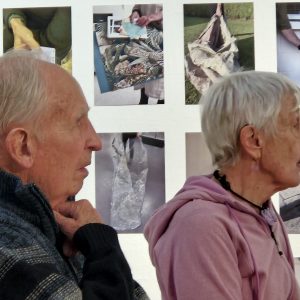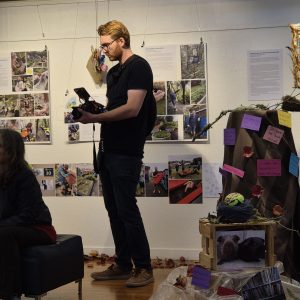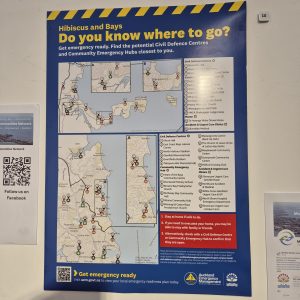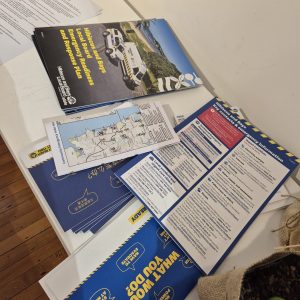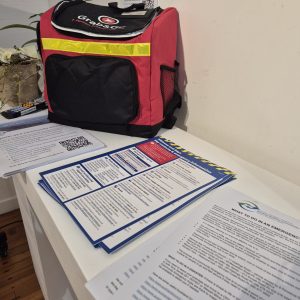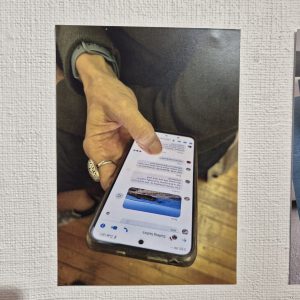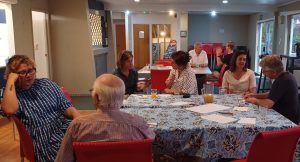Making Visible – Storm recovery stories
By Ruth Greenaway (writer and storyteller – contractor)
In 2023, Tāmaki Makaurau, Auckland, experienced severe weather events, followed by Cyclone Gabrielle a couple of weeks later. Following these events, Auckland Council conducted rapid assessments, resulting in 6,905 buildings being red, yellow, or white stickered – January 27 floods (5,455 buildings) and Cyclone Gabrielle (1,450 buildings). The most affected suburbs included Mt Albert, Mt Eden, East Coast Bays, Wairau Valley, Piha, Karekare, and Muriwai. On the North Shore alone, over 1,000 buildings were damaged, with 72 red stickered and 527 yellow stickered. [1]
Auckland Council established the Storm Recovery Office to develop a well-being recovery plan focused on supporting whānau and communities in Tāmaki Makaurau. This plan aimed to coordinate the delivery of community initiatives, support services, and resources across central and local government agencies, non-governmental organisations (NGOs), and service providers. The plan also took a broad, long-term view of Hauora (health and well-being) to ensure that individuals, whānau, and communities impacted by the 2023 weather events had ongoing access to the support they needed for successful recovery.[2]
By 18 July 2024, a total of 1,890 homes across Auckland had received a final property categorisation with 603 classed as category three and eligible for a buy-out. Category 3 buildings on the North Shore had already been deconstructed, including some community spaces in the floodplains of Browns Bay and Mairangi Bay. The Recovery Office aimed to complete all remaining categorisations by the end of March 2025.[3]
In response to these challenges, in 2024, ANCAD launched the East Coast Bays Community-led Storm Recovery Initiative, designed to explore what recovery meant for communities affected by the extreme weather events and their ongoing effects. Kristi Shaw was brought on board to facilitate community-led discussions and initiatives. Kristi, also a narrative therapist, had over 25 years of community development work experience in Aotearoa, focusing on building stronger, connected communities through project management that included disability, youth, families, seniors, and migrants.
Kristi organised “Conversations Worth Having,” which were strength-based, future-focused discussions held in small groups or during community events. She collaborated with the Bays in Action Network, Mid-Bays Resilience and Steering Committee, Browns Bay Resilience Group, North Shore Neighbourhood Support, and Restore Hibiscus and Bays, and encouraged all local networks to share their voices: ‘Our local clubs, villages, businesses, and everyone living in these spaces had an opportunity to come together to share our experiences and hopes for the future while discussing how we could support one another.’ She recalled a poignant query from Sam Wrightson, who managed the flooding recovery at the Mairangi Bay Tennis Club, was “We need to accept being on a flood plain, and what does this mean for us as a community?”
Concerns expressed by other participants included issues around insurance, future insurance, Land Information Memorandum (LIM) concerns, and navigating the uncertainty of buyouts. Questions also arose around stormwater management and mitigation measures. Participants wanted to know what could be done with spaces once houses were removed, how sediment was managed (e.g., at Long Bay Reserve), the legislative framework surrounding development on floodplains, and how they could improve water catchment and culvert management. Issues of managed retreat and the disconnect between Auckland Council, strategists, contractors, and subcontractors were also highlighted.
Participants made suggestions for improvement, including inviting someone from the Council to speak about water flow management in Browns Bay and Mairangi Bay, as well as further information on pipes and water catchments. They also expressed a desire for improved communication about mental health support options and greater connection with Council Local Recovery Navigators.
‘A couple of key focus areas for Recovery and Resilience from our collective learning were ‘Know Our Neighbours/Meet Our Heroes,’ and ‘How to Leverage Our Systems,’ said Kristi.
Many participants felt that neighbours and families who supported one another during the weather events, alongside the efforts of volunteers, notably the ‘Student Army’, were the heroes on the day. ‘We aimed to connect and work together to support our communities in East Coast Bays. We had an opportunity to amplify our collective voice and lead community initiatives regarding the future of these spaces.’
A co-creative community initiative called ‘Making Visible’ was an opportunity for neighbours to ‘Share, Create, and Connect.’ The May workshops, facilitated by Wendy Lawson, local artist/arts therapist, were a creative, reflective space to explore our storm recovery experience and contribute to a collaborative community artwork. Participants brought an object with meaning (whether emotionally, symbolically, or as a tangible part of their experience) and were part of a shared journey of storytelling and making. Stories and artwork created became part of the ‘Making Visible’ exhibition at the Mairangi Arts Centre, 14 – 19th June.
‘The focus was on understanding how this natural event had reshaped lives, particularly as it had influenced how we dwelled in relationship with people and place—our homes and community spaces, interwoven with the flood plains that feather through this stretch of coastal landscape. Building on this interplay, a hopeful outcome was to nurture connections among community members, building a sense of trust and awareness while also illuminating the individuals, services and groups that quietly supported the community.’
To find out how you could get involved, contact kristi@ancad.org.nz or join the East Coast Bays Storm Recovery Facebook Group. –https://www.facebook.com/groups/506559135744039/
This work was made possible through funding provided by Auckland Council-led Tāmaki Makaurau Recovery office for the benefit of East Coast Bays communities.
[1] Revealed: Auckland’s most flood-damaged areas (Accessed 25/03/25)
[2] Tāmaki Makaurau Recovery Plan (Accessed 25/03/25)
[3] Category 3 homes exceed Auckland Council forecast – Inside Government NZ (Accessed 2/04/25)

